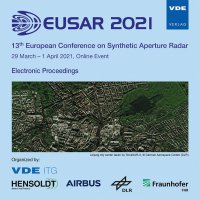Design of SmallSat SAR for Dedicated New Zealand Applications
Conference: EUSAR 2021 - 13th European Conference on Synthetic Aperture Radar
03/29/2021 - 04/01/2021 at online
Proceedings: EUSAR 2021
Pages: 5Language: englishTyp: PDF
Authors:
Krecke, Jan; Austin, Andrew C. M. (Department of Electrical, Computer and Software Engineering; University of Auckland; New Zealand)
Villano, Michelangelo; Ustalli, Nertjana; Krieger, Gerhard (Microwaves and Radar Institute, German Aerospace Center (DLR), Germany)
Cater, John E. (Department of Engineering Science, University of Auckland, New Zealand)
Abstract:
Spaceborne Synthetic Aperture Radar (SAR) is a proven technology for remote sensing of the surface of the Earth and is used for a variety of applications. However, conventional SAR satellites are large, heavy, and expensive, preventing the formation of large constellations, which are desirable to reduce the time between acquisitions of a particular area on the ground. To reduce the costs typically associated with spaceborne SAR platforms, it is proposed to design a SAR system for use on a small satellite platform. This small-satellite SAR system is designed around two specific scenarios: detection of fishing vessels in the New Zealand Exclusive Economic Zone (EEZ), and interferometric measurements of deformations of New Zealand’s land surface. It is shown that the performance limitations of small-satellite SAR systems –mainly high ambiguity levels and low radiometric sensitivity – can still be tolerated for the targeted applications. The sparse nature of ships on the ocean and of point-like scatterers in Persistent Scatterer Interferometry (PSI) can be exploited to resolve ambiguities, and to distinguish targets from the noisy background. The proposed SmallSat SAR system is developed within the framework of a recently initiated collaboration between the German Aerospace Center (DLR), the New Zealand Space Agency (NZSA), and the University of Auckland.


